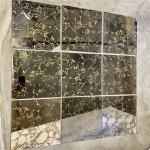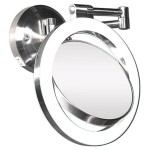How to Mirror Macbook to TV Without Apple ID
Mirroring a Macbook screen to a television offers a larger viewing experience for presentations, entertainment, or simply extending the workspace. While Apple's ecosystem often emphasizes the use of Apple IDs and associated services like AirPlay, several methods allow screen mirroring without requiring an Apple ID. This article outlines various techniques, catering to different TV types and connection options.
Utilizing HDMI Cables: A Direct Approach
A wired connection via HDMI offers a reliable and high-quality mirroring solution. This method bypasses the need for network configurations or Apple ID logins. First, determine the HDMI port on both the Macbook and the TV. Macbooks often require an adapter depending on the model, such as USB-C to HDMI or Mini DisplayPort to HDMI. These adapters are readily available from various electronics retailers. Once the appropriate adapter is connected to the Macbook, connect a standard HDMI cable between the adapter and the TV's HDMI port.
Next, select the correct HDMI input source on the television using the remote control. The Macbook's display should automatically mirror to the TV. If not, access System Preferences on the Macbook, navigate to Displays, and select the TV as the output source. Adjust resolution and scaling settings as needed for optimal viewing.
Leveraging Chromecast: A Wireless Alternative
Google Chromecast provides a wireless method for mirroring without an Apple ID. This requires a Chromecast device plugged into the TV's HDMI port and connected to the same Wi-Fi network as the Macbook. Several third-party applications facilitate screen mirroring to Chromecast. These applications, readily available online or through app stores, function as intermediaries between the Macbook and the Chromecast.
After installing a suitable Chromecast mirroring application on the Macbook, launch the application. It will typically scan the network for available Chromecast devices. Select the Chromecast connected to the desired TV. The application then mirrors the Macbook's display to the TV. Specific instructions may vary depending on the chosen application, so consulting the application's documentation is advised.
Screen Mirroring to Smart TVs: Direct Wireless Connection
Many modern smart TVs incorporate screen mirroring capabilities without relying on external devices like Chromecast. These TVs often support standards such as Miracast or other proprietary wireless display technologies. To use this method, ensure both the Macbook and the smart TV are connected to the same Wi-Fi network.
Access the TV's input source settings and look for an option related to screen mirroring, screen sharing, or wireless display. The specific name for this feature varies depending on the TV manufacturer. Simultaneously, on the Macbook, access System Preferences, then Displays. Look for the "AirPlay Display" or similar option and select the smart TV from the available devices. This establishes a direct wireless connection for screen mirroring.
Considerations for Different Macbook Models
The process for mirroring may vary slightly depending on the Macbook model. Older Macbooks may have different port configurations, requiring specific adapters. For instance, Macbooks with Thunderbolt ports can use Thunderbolt to HDMI adapters. Researching the specific port configuration of the Macbook model is recommended to ensure the correct adapters are used.
Troubleshooting Common Issues
If the Macbook's display does not appear on the TV after following the steps outlined above, several troubleshooting steps can be taken. First, double-check all cable connections and ensure the TV is set to the correct input source. Restarting both the Macbook and the TV can sometimes resolve connection issues. Verifying that both devices are connected to the same Wi-Fi network is crucial for wireless mirroring methods. If issues persist, consulting the specific documentation for the TV or the chosen mirroring application can provide further guidance.
Adapting to Specific TV Manufacturers
Different TV manufacturers might have specific settings or requirements for screen mirroring. Consulting the user manual or online support resources for the specific TV model can provide detailed instructions. Some manufacturers may offer dedicated applications for their smart TVs, which can facilitate screen mirroring from a Macbook.
Maintaining Network Connectivity
For wireless mirroring methods, a stable Wi-Fi connection is essential for a smooth experience. Interference from other devices or network congestion can negatively impact the mirroring performance. Ensuring the Macbook and the TV are within reasonable proximity to the Wi-Fi router can improve connection stability. Closing unnecessary applications or processes on the Macbook can also free up bandwidth and enhance the mirroring performance.

How To Mirror Mac Tv Without Apple

App How Do I Mirror My Mac To Tv Without Apple Samsung Lg Sony Panasonic Roku Android

5 Solutions To Airplay Mirroring Without Apple Tv 2024 Dr Fone

App How Do I Mirror My Mac To Tv Without Apple Samsung Lg Sony Panasonic Roku Android

Screen Mirroring Iphone Or Macbook To Tv Without Apple

Mirror Mac To Tv Without Apple Save Money Get Free App

Connect Hisense Tv To Apple Mac Wireless Screen Mirror App

Connect Hisense Tv To Apple Mac Wireless Screen Mirror App

Screen Mirroring Mac To Tv Wirelessly Without Apple

How To Mirror Mac Screen Samsung Tv Without Apple








